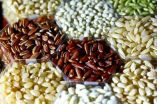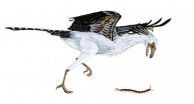(Press-News.org) Washington, DC, May 27, 2014 – Healthcare-associated vancomycin-resistant enterococcus (VRE), methicillin-resistant Staphylococcus aureus (MRSA), Clostridium difficile (CD), and other multidrug-resistant organisms (MDRO) were decreased among patients after adding ultraviolet environmental disinfection (UVD) to the cleaning regimen, according to a study published in the June issue of the American Journal of Infection Control, the official publication of the Association for Professionals in Infection Control and Epidemiology (APIC).
In this retrospective study led by the Department of Infection Prevention and Control at Westchester Medical Center in Valhalla, NY, researchers discovered that the rate of healthcare-associated infections caused by MDRO and C. difficile was significantly lower during the 22 months of UVD use compared with the 30-month period before UVD (2.14 cases per 1,000 patient-days vs 2.67 cases, respectively). This dramatic decline in incidence occurred despite missing 24 percent of UVD opportunities.
UVD is a disinfection method that uses ultraviolet light to kill microorganisms in the patients' environment.
"In our study, overall decreases in MDRO plus C. difficile were led by a decrease in VRE, which is our most common hospital-acquired MDRO," the authors state. "Although there were many other simultaneous infection control interventions occurring at our hospital that could have contributed to the reduction in VRE acquisition, the rates experienced during UVD are the lowest incidence rates of VRE at our institution for the past 10 years and were sustained for 22 months."
The study analyzed 52 months of hospital-acquired MDROs plus C. difficile before and during UVD use. During the pre-UVD period (January 2009-June 2011), the hospital used standard cleaning protocols [sodium hypochlorite (bleach)] to disinfect MDRO patient rooms upon discharge. Once the hospital leased two UVD machines and trained the staff to use them, the second phase began (July 2011-April 2013), during which UVD was added to the cleaning regimen.
In addition to use for contact precaution discharges, UVD was used weekly in the dialysis unit and for all burn unit discharges. UVD could be requested for rooms of long-stay patients or for discharges in units with high prevalence of MDRO or CD.
Under contact precautions, everyone coming into a patient's room is asked to wear a gown and gloves because the patient has a type of infection that can be spread by touching the patient or their environment.
The system was used for 6 minutes in the bathroom and 6 minutes each at two positions in the patient room. On average, UVD added 51 minutes per discharge.
"Use of UVD as an adjunct to routine discharge cleaning of contact precautions rooms was feasible and temporally associated with a significant decrease in hospital-acquired MDRO plus CD in our institution," conclude the authors.
INFORMATION: END
Ultraviolet cleaning reduces hospital superbugs by 20 percent: Study
2014-05-28
ELSE PRESS RELEASES FROM THIS DATE:
What can plants reveal about gene flow? That it's an important evolutionary force
2014-05-28
A plant breeder discovers his experimental crops have been "contaminated" with genes from a neighboring field. New nasty weeds sometimes evolve directly from natural crosses between domesticated species and their wild relatives. A rare plant is threatened due to its small population size and restricted range. What do all these situations have in common? They illustrate the important role of gene flow among populations and its potential consequences. Although gene flow was recognized by a few scientists as a significant evolutionary force as early as the 1940s, its relative ...
In Africa, STI testing could boost HIV prevention
2014-05-28
PROVIDENCE, R.I. [Brown University] — To maximize HIV prevention efforts in South Africa and perhaps the broader region, public health officials should consider testing for other sexually transmitted infections when they test for HIV, according to a new paper in the journal Sexually Transmitted Infections.
STIs can make HIV easier to transmit even after antiretroviral therapy has begun, so rooting out STI co-infections in patients should improve HIV prevention. The new study led by Brown University public health researchers emphasizes that sooner is indeed better than ...
Variety in diet can hamper microbial diversity in the gut
2014-05-28
AUSTIN, Texas — Scientists from The University of Texas at Austin and five other institutions have discovered that the more diverse the diet of a fish, the less diverse are the microbes living in its gut. If the effect is confirmed in humans, it could mean that the combinations of foods people eat can influence the diversity of their gut microbes.
The research could have implications for how probiotics and diet are used to treat diseases associated with the bacteria in human digestive systems.
A large body of research has shown that the human microbiome, the collection ...
Melting Arctic opens new passages for invasive species
2014-05-28
For the first time in roughly 2 million years, melting Arctic sea ice is connecting the north Pacific and north Atlantic oceans. The newly opened passages leave both coasts and Arctic waters vulnerable to a large wave of invasive species, biologists from the Smithsonian Environmental Research Center assert in a commentary published May 28 in Nature Climate Change.
Two new shipping routes have opened in the Arctic: the Northwest Passage through Canada, and the Northern Sea Route, a 3000-mile stretch along the coasts of Russia and Norway connecting the Barents and Bering ...
3,000 rice genome sequences made publicly available on World Hunger Day
2014-05-28
The open-access, open-data journal GigaScience (published by BGI and Biomed Central), announces today the publication of an article on the genome sequencing of 3000 rice strains along with the release of this entire dataset in a citable format in journal's affiliated open-access database, GigaDB. The publication and release of this enormous data set (which quadruples the current amount of publicly available rice sequence data) coincides with World Hunger Day to highlight one of the primary goals of this project— to develop resources that will aid in improving global food ...
High-status co-eds use 'slut discourse' to assert class advantage
2014-05-28
WASHINGTON, DC, May 27, 2014 — A new study suggests that high-status female college students employ "slut discourse" — defining their styles of femininity and approaches to sexuality as classy rather than trashy or slutty — to assert class advantage and put themselves in a position where they can enjoy sexual exploration with few social consequences.
"Viewing women only as victims of men's sexual dominance fails to hold women accountable for the roles they play in reproducing social inequalities," said lead author Elizabeth A. Armstrong, an associate professor of sociology ...
Prehistoric birds lacked in diversity
2014-05-28
Birds come in astounding variety—from hummingbirds to emus—and behave in myriad ways: they soar the skies, swim the waters, and forage the forests. But this wasn't always the case, according to research by scientists at the University of Chicago and the Field Museum.
The researchers found a striking lack of diversity in the earliest known fossil bird fauna (a set of species that lived at about the same time and in the same habitat). "There were no swans, no swallows, no herons, nothing like that. They were pretty much all between a sparrow and a crow," said Jonathan ...
Cod bones reveal 13th century origin of global fish trade
2014-05-28
London's international fish trade can be traced back 800 years to the medieval period, according to new research published today in the journal Antiquity.
The research, led by archaeologists from UCL, Cambridge and UCLan, provides new insight into the medieval fish trade and the globalisation of London's food supply.
Archaeologists analysed data from nearly 3,000 cod bones found in 95 different excavations in and around London. They identified a sudden change in the origin of the fish during the early 13th century, indicating the onset of a large-scale import trade.
Lead ...
Butterfly 'eyespots' add detail to the story of evolution
2014-05-28
CORVALLIS, Ore. – A new study of the colorful "eyespots" on the wings of some butterfly species is helping to address fundamental questions about evolution that are conceptually similar to the quandary Aristotle wrestled with about 330 B.C. – "which came first, the chicken or the egg?"
After consideration, Aristotle decided that both the egg and the chicken had always existed. That was not the right answer. The new Oregon State University research is providing a little more detail.
The study, published today in Proceedings of the Royal Society B, actually attempts to ...
Should sugary drinks carry a health warning?
2014-05-28
In a personal view published on bmj.com today, a professor of public health at a leading university thinks there should be health warning labels on sugary drinks.
Professor Simon Capewell, professor at the University of Liverpool, highlights that the State of California is considering a new health bill. One which will see sugary drinks labelled with health warnings, vending machines to bear warning labels, and fines of between $50 and $500 per failed inspection".
Professor Capewell thinks this is a good idea, and one that the UK public would support.
He says that ...




